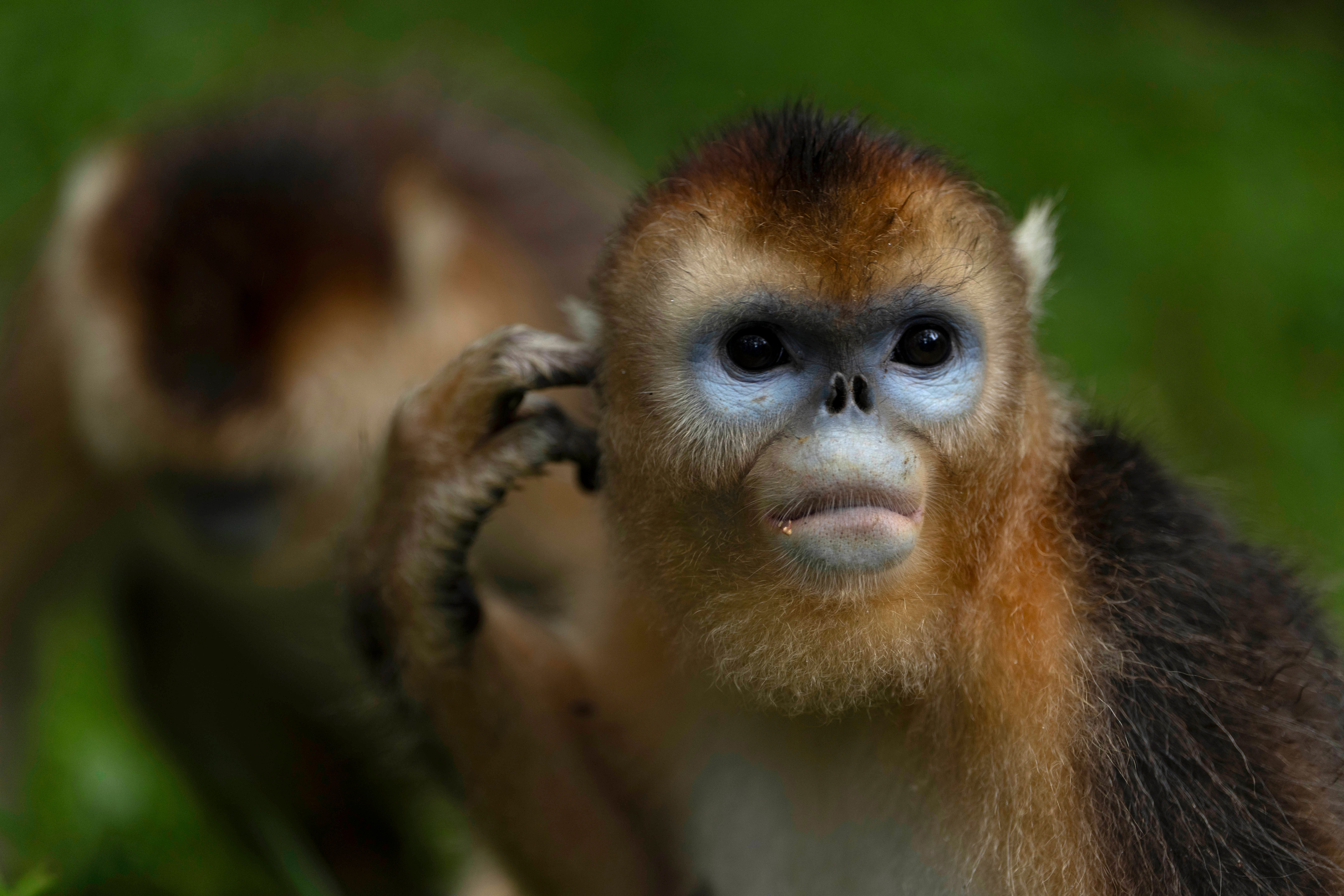With their distinctive shaggy orange manes, pale blue faces, and dense fur covering their hands and feet, it’s hard to mistake China’s endangered golden snub-nosed monkeys for any other animal. These rare and charismatic primates, unique to the frigid mountains of central China, have recently joined the country’s famous pandas as furry envoys to zoos in Europe. For the first time, they have been loaned out for 10 years from the same government-overseen group that coordinates official panda exchanges.
As with “panda diplomacy,” some observers welcome new opportunities for scientific and conservation collaboration, while others raise concerns about the welfare of individual animal ambassadors transported around the world.
### Leaping Among Red and Gray-Tiled Roofs
Three golden snub-nosed monkeys arrived at France’s Beauval Zoo in the city of Saint-Aignan this April, marking an agreement commemorating the 60th anniversary of diplomatic relations between the People’s Republic of China and France.
Another group of three monkeys reached the Pairi Daiza zoo in Hainaut, Belgium, in May. On their arrival day, the zoo gave visitors Belgian and Chinese hand flags to celebrate the occasion.
After a month-long quarantine, both groups of monkeys made their public debuts. So far, according to the two zoos, the animals appear to be in good health and are adapting well to new climates outside Asia for the first time.
At Pairi Daiza, the habitat enclosure for Liu Yun, Lu Lu, and Juan Juan features traditional Chinese gazebos with red columns and gray-tiled roofs. The monkeys spend much of their time jumping between logs and rope ladders and scrambling over rooftops.
“The diplomatic aspect comes from this cultural awareness,” said Johan Vreys, spokesperson for Pairi Daiza.
The hope is to build longstanding scientific exchanges between the zoos and Chinese authorities, said Anaïs Maury, communications director at Beauval Zoo. The zoo is currently in discussions with China to launch joint research and conservation programs “similar to those already in place for other emblematic species like pandas,” she added.
### A Short History of Modern Animal Ambassadors
Both giant pandas and golden snub-nosed monkeys are endangered animals unique to China, and they can only be moved outside the country with approval from the central government, explained Elena Songster, an environmental historian at St. Mary’s College of California.
While both species are considered national treasures, only the golden snub-nosed monkeys have deep roots in Chinese art and culture. They appear in countless paintings and classic literature, including the wily Monkey King from the 16th-century novel *Journey to the West*.
When pandas first appeared on the world stage in recent decades, they quickly became symbols of modern China, in part due to their “cuddly cuteness” and effective diplomatic presentation, said Susan Brownell, a China historian at the University of Missouri, St. Louis.
The original soft power couple from post-war China was a pair of giant pandas, Ping Ping and Qi Qi, who were sent to the Soviet Union in 1957 to celebrate the 40th anniversary of the October Revolution, which established the world’s first Communist state.
In 1972, a pair of pandas was sent to the United States for the first time following President Richard Nixon’s historic visit to Beijing.
By 1984, China shifted from gifting pandas to loaning them. After outcry from animal-rights activists, China ended the practice of short-term loans and began longer leases, typically spanning around a decade.
Under this arrangement through the China Wildlife Conservation Association, a portion of the annual fees paid by overseas zoos must be earmarked for habitat conservation or scientific research benefiting the species.
Still, what benefits a species may not always be beneficial to individual animals. Transporting animals over long distances and sending their offspring back to China, as the agreements require, can cause significant stress, noted Jeff Sebo, an environmental and bioethics researcher at New York University.
“Animal health and welfare matters,” he said, “not just for geopolitical or strategic aims.”
### Habitat Conservation in China
Within China, golden snub-nosed monkeys currently inhabit a swath of central and southwestern provinces, including Sichuan, Shaanxi, Gansu, and Hubei.
At the Shennongjia National Park in Hubei, conservation efforts since the 1980s have helped increase the local population threefold, to around 1,600 monkeys today, said Yang Jingyuan, president of the Academy of Sciences at the park.
### The Role of Animal Ambassadors in Diplomacy
It remains unclear how to evaluate the overall diplomatic impact of these furry ambassadors. However, in an era of rising global tensions, “I think pandas are a really useful entryway,” said James Carter, a China historian at Saint Joseph’s University in Philadelphia.
“Pandas open up an opportunity for people to think something positive about China — they’re cute, they don’t do anything bad.”
The golden snub-nosed monkeys now residing at zoos in France and Belgium are the only ones outside Asia so far.
“China’s golden snub-nosed monkeys aren’t globally iconic yet,” said Brownell, “but there may be potential for them to be in the future.”
https://nypost.com/2025/10/25/world-news/chinas-rare-monkeys-debut-at-european-zoos-possible-next-panda-diplomacy/



